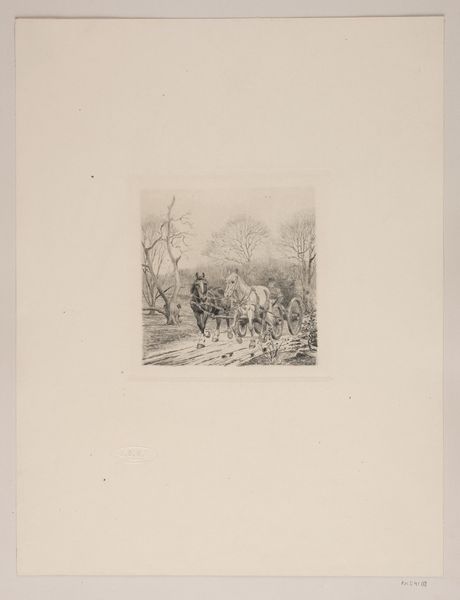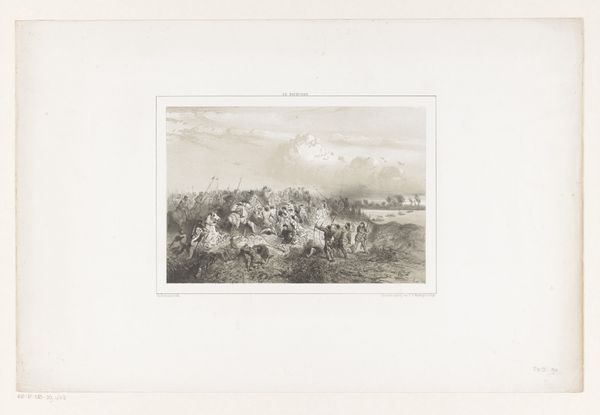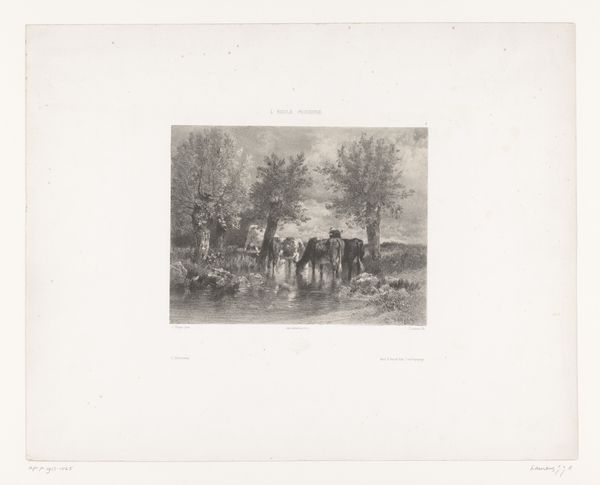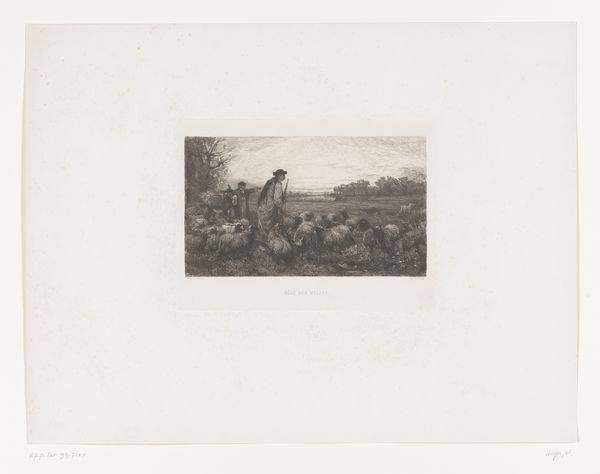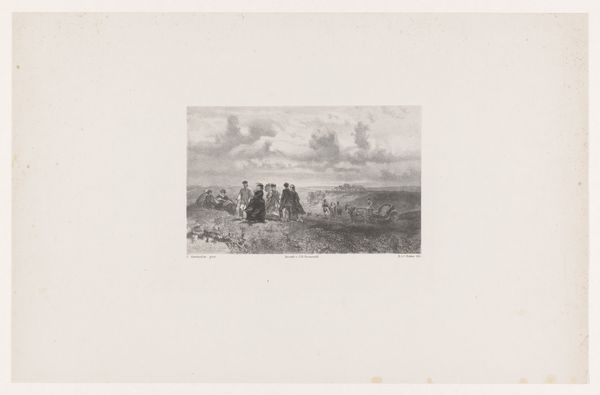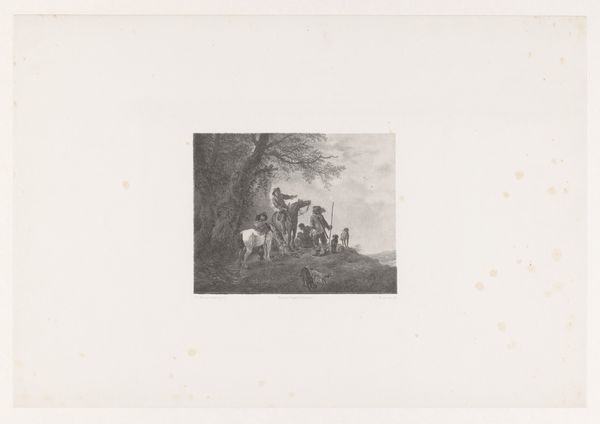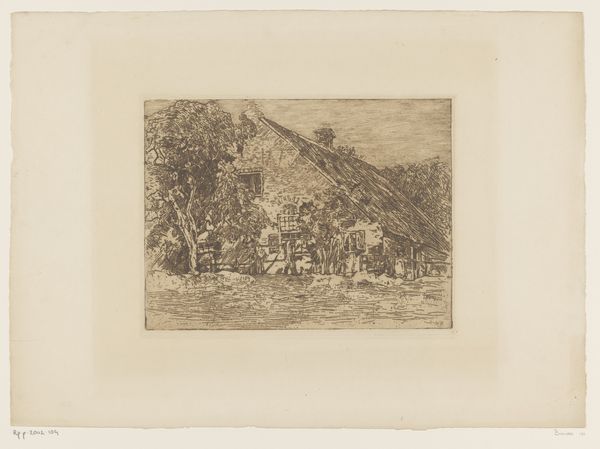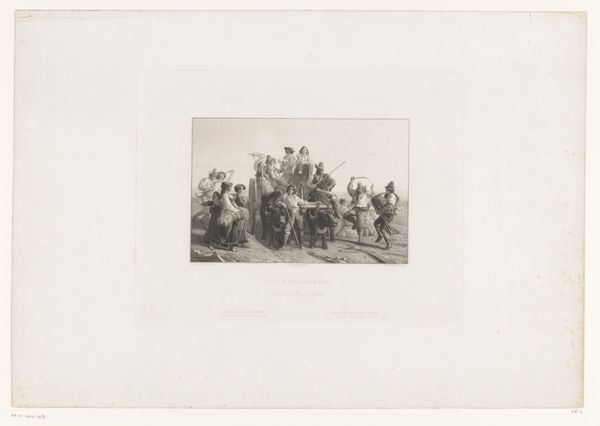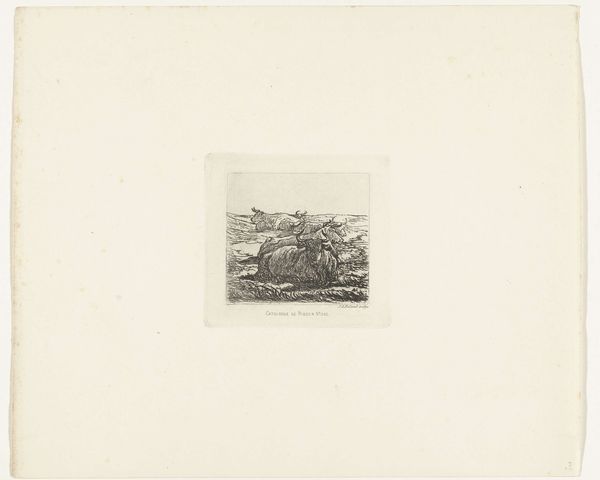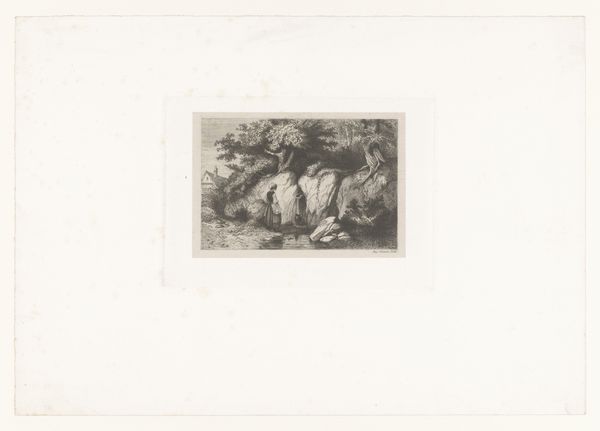
drawing, pencil
#
portrait
#
drawing
#
landscape
#
pencil
#
horse
#
genre-painting
#
history-painting
Dimensions: height 355 mm, width 535 mm
Copyright: Rijks Museum: Open Domain
Curator: Johan Conrad Greive's 1876 pencil drawing, "Prins Willem II inspecteert de verdediging van Amsterdam," captures a moment in Dutch history, housed here at the Rijksmuseum. Editor: My first impression is that it feels almost photographic in its detail, despite the limitations of the medium. There's a real sense of bustling activity frozen in time, but also a slightly washed out, melancholic quality about it. Curator: Yes, the greyscale palette undoubtedly lends a somber mood, impacting its reading, but if you look closely, Greive meticulously renders the textures of fabric, wood, and even the horse's musculature. We should think about Greive's labor and intention as well: mass mobilization as defense, with citizen-soldiers and cannons to repel outside influences, here depicted in graphite to record for the history books. Editor: The composition, though, reinforces that mood. Note how Prince Willem II and his retinue are positioned slightly off-center. The artist used strong diagonal lines in the crowd toward the fortifications. It almost visually mimics a stage setup to accentuate his stature. What about a look into Greive's semiotic language? Curator: From my perspective, focusing just on aesthetic qualities overlooks critical social contexts. I'd push for analyzing the means of production and reproduction here. Consider who would've consumed such imagery, or what this drawing could say about 19th century ideas about the monarchy and the citizens it relied on to secure its power and position. Editor: Still, even acknowledging that broader scope, shouldn't we consider how Greive specifically utilized landscape and portrait styles in what seems to be a genre painting in disguise to enhance the narrative? His ability to harmonize these is vital in understanding its message, but do we disagree about Greive himself here? Curator: Certainly. It offers a lens into considering historical depictions through art practices deeply affected by burgeoning nationalism and ideas of Dutch identity during that era, with his drawing practice being used almost as evidence. Editor: Interesting to see how a single artwork elicits two fundamentally divergent analytical pathways—one rooted in the structure and style and one committed to material and context. Curator: Agreed. It’s a testament to the drawing’s layers of meaning and its engagement with wider themes in art.
Comments
No comments
Be the first to comment and join the conversation on the ultimate creative platform.

